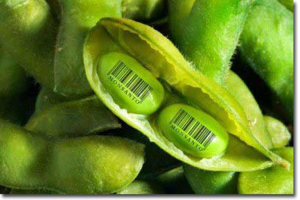Monsanto, Syngenta, Dow, Bayer, Basf are all familiar household names. What they all have in common is that they are all transnational seed companies. They not only research and sell seeds but also pesticides, chemical fertilizers and other agricultural inputs. Recently, these companies, are showing a trend towards greater concentration through merger and acquisitions. Recently, Dow and Dupont merged to form Dow-Dupont. Chem China acquired Syngenta. Monsanto in order to maintain its competitiveness is also considering merging with another company. Currently, Dow-Dupont, Chem China and Syngenta, Monstanto, Bayer, and Basf take up 75% of the private farming research sector, 75% of sales of agrochemicals, and 63% of seed sales in the world 1. This type of market share was achieved in the past twenty years since the introduction of genetically modified crops through the acquisition of 200 seed and agrichemical companies.
The problem with this trend of mergers and acquisitions is the monopolization of agricultural inputs into the hands of a few which weakens the food supply base. In addition, corporations state that exclusive monopoly rights on patents motivates companies to innovate. However, with the concentration of companies into just a few the number of research development companies decreased from 35 in 1995 to 18 in 2012. Monsanto, for instance, states that its mergers and acquisitions give more choices to farmers, but research studies show how seed variety in Northern Europe has decreased. That is because the companies simply focused on hybrids or those seed varieties that yielded high profits. Not only that, as the monopolies became more concentrated, the price of seeds went up. For example, in the United States from 1990 to 2010, the price of inputs increased relative to the price of the products, especially the price of seeds increased nearly doubling.2
While farmers that have to pay for the rise in the cost of seeds or are forced to buy seeds that cannot reproduce feel the impacts, it’s difficult for us to feel the impact of these mergers and acquisitions between transnational corporations in our daily lives. However, let us look at the foods that we eat. To cultivate our food, seedlings are grown from the GMO seeds and sprayed with the fertilizers and pesticides sold by these companies. The story changes when we look at it like that.
To further explore, how the issue of these seed companies is all of our issue and to learn about solutions and alternatives, I interviewed Han, Yeongmi, former General Secretary of the Korean Woman Peasants’ Association (KWPA) of Gwangwon Province. I asked her how it came to be that most of the food we eat can only be made from these agricultural products.
“After World War II, companies that produced and sold weapons, by using similar raw materials, changed into agrochemical companies. As the interests of companies selling chemical pesticides and fertilizers and government’s desire for high-yields coincided, government policy pressured farmers to improve their seeds. Farmers that were reconfigured to a green revolution style farming had no choice. Furthermore, after multinational companies bought up domestic seed companies during the IMF crisis, farmers came to have no choice but to buy the products of these multinatinational corporations to farm.”
In order to counter the subjugation of agriculture to these seed companies, the KWPA planted the movement to save native seeds. Han, Yeoungmi explains that native seeds are the key to solve the problem.
“In a system where farmers have to buy their inputs, and where production costs rise, but the price of their goods is not guaranteed, farmers can’t help but be saddled with debt. That’s why farmers are leaving rural areas, and now only 2.5 million farmers remain. Where is the starting point of this vicious cycle? The answer is the seed. I believe that the beginning and the end of this vicious cycle is in the seed. The vicious cycle started with the cultivation of high yield, functional seeds such as F1 seeds. 3 What can put a stop to them are indigenous seeds.”
Unlike GMO seeds that are single use and have low adaptability to environmental changes, indigenous seeds are diverse, have a high adaptability to environmental changes, can be gathered and replanted again. Finding these indigenous seeds, operating a seed farm to continuously reproduce them, raising public consciousness, and selling the products harvested from these seeds is what makes up these movement. However, the impact of these movement to preserve indigenous seeds grows when it’s not just farmers that are involved, but all of us. “When we organize consumers that change their dinner table to be based on traditional products, then the producer changes, and the manufacturer changes. At the most basic of the indigenous seed protection movement is changing one’s dinner table to incorporate many traditional agricultural products.”
Food is the source of all our energy. Currently, seeds, which are the alpha and omega of our food, are being concentrated in the hands of large corporations as simply a means to increasing profits. The seeds passed down generation after generation ever since humans first started farming have always been replantable. Now, seeds are being altered so that farmers have to constantly buy new seeds. If not only farmers, but also we care about and participate in where the food we eat comes from and how it is produced, then we will find those seeds we have lost. When we change our dinner table, we change the world.
written by Jeong Eun Hwang (General Secretary, ISC)
and interviewed Han, Young-mi
(Former General Secretary of the Korean Woman Peasant’s Association Gangwon-do Union)
Notes:
- Sino-Genta?, etc Group http://www.etcgroup.org/content/sino-genta
- Breaking Bad: Big Ag Mega-Mergers in Play Dow+Dupont in the Pocket? Next: Demonsanto? http://www.etcgroup.org/content/breaking-bad-big-ag-mega-mergers-play
- An F1 is created by breeding two different lines of a crop together to create a cross or a hybrid. You cannot save good seeds from F1 hybrids. The plants that grow from them will be different from their parents, often weak and unproductive. (http://www.verticalveg.org.uk/f1-seeds-what-they-are-and-why-theyre-best-avoided/)
